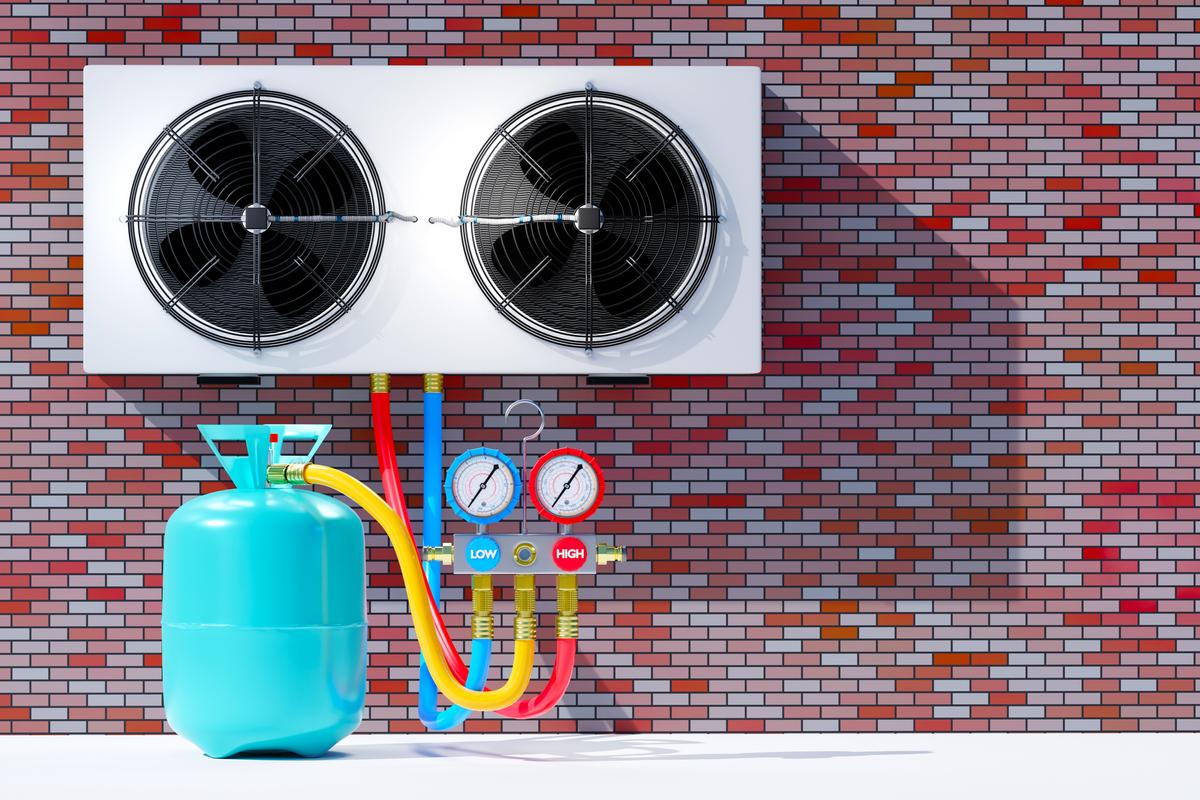R410A refrigerant is a commonly used cooling agent in air conditioning systems. It has gained popularity in recent years due to its environmentally friendly properties and high cooling efficiency. In this blog, we will delve into the specifics of R410A, exploring what it is, how it works, its environmental impact, and its advantages over older refrigerants.
What is R410A?
R410A is a hydrofluorocarbon (HFC) refrigerant, a chemical compound used in air conditioning and refrigeration systems to transfer heat and maintain a cool environment. Unlike its predecessors, such as R22, R410A is chlorine-free, making it a safer choice for the environment. It is a blend of two refrigerants, namely, difluoromethane (R32) and pentafluoroethane (R125), which work together to provide efficient cooling.
How Does R410A Work?
R410A refrigerant operates on a basic cycle, much like other common refrigerants. When the refrigerant circulates in an air conditioning system, it undergoes phase changes from a gas to a liquid and back again. This phase change allows it to absorb heat from the indoor air and release it outside, thereby cooling the indoor space. R410A is known for its high heat-carrying capacity, which results in quick and efficient cooling.
The refrigeration cycle using R410A can be broken down into several key steps. First, the compressor in the air conditioning unit pressurizes the gaseous R410A, causing it to become a high-pressure, high-temperature gas. This gas is then sent to the condenser coil located outside the building.
In the condenser coil, the hot, high-pressure gas releases heat to the surrounding environment, causing it to condense into a high-pressure liquid. This process is where the outdoor unit dissipates the heat absorbed from the indoor air, making it significantly cooler.
The high-pressure liquid R410A is then transported back inside the building to the evaporator coil. Inside the evaporator coil, the refrigerant undergoes an expansion, turning it into a low-pressure, low-temperature gas. This transition allows it to absorb heat from the indoor air, which, in turn, cools the air in your living space.
Once the indoor heat is absorbed, the low-pressure gas is returned to the compressor to start the cycle again. This continuous process effectively removes heat from the indoor environment, providing cool and comfortable living conditions.
Environmental Impact of R410A
One of the significant advantages of R410A is its reduced impact on the environment compared to older refrigerants. It does not contain chlorine, which means it does not deplete the ozone layer. While R410A is still considered a greenhouse gas, it has a much lower global warming potential (GWP) than some older refrigerants like R22, making it a better choice for mitigating climate change.
The absence of chlorine in R410A is a key environmental benefit. Chlorine-containing refrigerants, such as the now-phased-out R22, were known to contribute to ozone layer depletion when released into the atmosphere. R410A, being chlorine-free, does not pose this threat. It’s classified as an HFC (hydrofluorocarbon), which is considered ozone-friendly.
Additionally, R410A’s lower GWP is an important factor in its environmental favorability. Global warming potential measures how much heat a gas traps in the atmosphere compared to carbon dioxide over a specific period. R410A has a GWP significantly lower than older refrigerants, meaning it has a lesser impact on climate change.
These environmentally conscious attributes make R410A a preferred choice for modern air conditioning and refrigeration systems, aligning with global efforts to reduce the environmental footprint of HVAC technologies. However, as environmental regulations continue to evolve, there may be even more eco-friendly refrigerants developed in the future to further reduce the impact of cooling systems on our planet.
Advantages of R410A
R410A offers several advantages over its predecessors, which have led to its widespread adoption in the air conditioning industry. Some of these advantages include:
Efficiency: R410A is highly efficient and capable of providing effective cooling, even in extreme temperatures.
Environmental Friendliness: Its lower GWP and absence of chlorine make it a more eco-friendly option.
Compliance: R410A is compliant with regulations like the Montreal Protocol and the Kigali Amendment, which aim to reduce the use of ozone-depleting substances and HFCs.
Energy Savings: Due to its efficiency, R410A systems often result in lower energy bills for consumers.
Longevity: R410A systems tend to have a longer lifespan, reducing the need for frequent replacements.
Conclusion
R410A refrigerant has become a standard in the air conditioning industry due to its efficient cooling capabilities, reduced environmental impact, and compliance with international regulations. As technology advances, we can expect even more eco-friendly refrigerants to emerge, but for now, R410A remains a reliable and responsible choice for cooling our indoor spaces.

